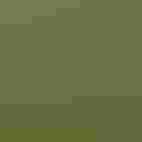Gray-headed Swamphen
At a Glance
Native to southern Asia, these big marsh birds have been established in Florida since the 1990s. First noted near Pembroke Pines in 1996, the population might have originated with birds that escaped from captivity after Hurricane Andrew in 1992. Now widespread around marshes and ponds in southeastern Florida, where they may number in the thousands. Some authorities treat this bird as a subspecies of the Purple Swamphen, widespread in the Old World from southern Europe to southern Africa and New Zealand.
All bird guide text and rangemaps adapted from Lives of North American Birds by Kenn Kaufman© 1996, used by permission of Houghton Mifflin Harcourt Publishing Company. All rights reserved.
Category
Chicken-like Marsh Birds, Rails, Gallinules, Coots
IUCN Status
Least Concern
Habitat
Fields, Meadows, and Grasslands, Freshwater Wetlands, Lakes, Ponds, and Rivers
Behavior
Flushes, Running, Swimming, Walking
Range & Identification
Description
18" (46 cm). A big, ungainly marsh bird. Similar to the Purple Gallinule but noticeably larger, with thick, red, triangular bill, red frontal shield on forehead, and legs reddish, not yellow. Pale head is more grayish on males, more gray-blue on females. Mostly purplish blue body, blue-green wings, and conspicuous white undertail coverts.
Size
About the size of a Crow, About the size of a Mallard or Herring Gull
Color
Blue, Gray, Green, Purple, Red, White
Wing Shape
Broad, Rounded
Tail Shape
Short
Songs and Calls
Call Type
Complex, Croak/Quack, Harsh, Honk, Scream
Habitat
Shallow freshwater wetlands, including marshes, ponds, and flooded fields. Also will forage in open grassy areas near water, such as lawns and golf courses.
Sign up for Audubon's newsletter to learn more about birds like the Gray-headed Swamphen
Behavior
Eggs
Each breeding female lays 3-7 eggs, but multiple females may lay in same nest. Eggs are tan or buff with darker brown spots. Incubation is by both sexes, and probably takes about 3 weeks.
Young
Fed by adults at first. May start to find some of their own food within a few days after hatching, but adults continue to feed them for several weeks.
Feeding Behavior
Forages mostly by wading along shorelines or in shallow marshes or wet fields, sometimes by climbing about in marsh vegetation, occasionally while swimming. Often stands on one foot and uses other foot to grasp plant stems and pull them up to beak.
Diet
Mostly plant material, including stalks, roots, leaves, and seeds of aquatic plants, especially spikerush in Florida. Also eats some insects, frogs, snails, and other small creatures, or scavenges food scraps left by humans.



